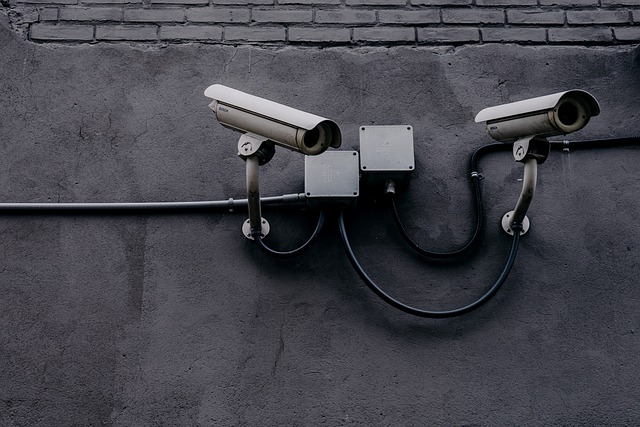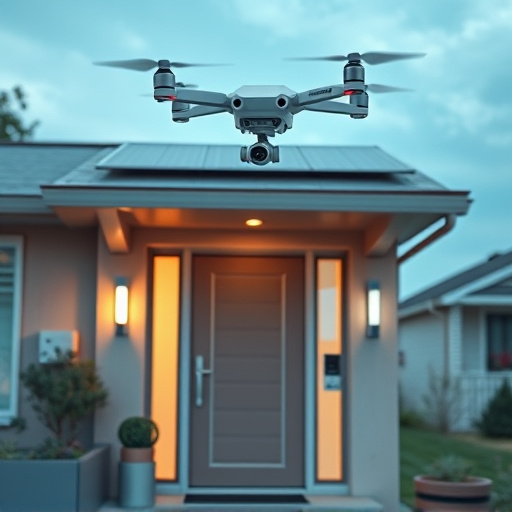The future of home security revolves around integrating advanced innovative security technologies powered by AI and biometric data. These security technology advancements offer interactive defenses, real-time notifications, and risk insights through data analysis. Emerging home protection trends include smart connectivity, biometric identification like facial recognition and fingerprint scanning, and predictive AI algorithms. While the Internet of Things (IoT) brings benefits like real-time monitoring, it also poses challenges related to data privacy and compatibility, requiring robust cybersecurity measures. Future security trends point towards a more adaptive and responsive home security network.
The future of home security is here, with innovative technologies transforming how we protect our spaces. From smart home security systems that adapt to your routines to biometric and AI-powered protections offering unprecedented accuracy, the landscape is evolving rapidly. The Internet of Things (IoT) opens new possibilities for remote monitoring and automated responses, but also presents challenges in data privacy and security. Discover the cutting-edge security solutions that are redefining emerging home protection and explore future security trends shaping our homes.
- Smart Home Security Systems: The New Normal
- Biometric and AI-Powered Protections
- Internet of Things (IoT) Devices: Opportunities and Challenges
Smart Home Security Systems: The New Normal

As we move into an era dominated by smart homes and connected devices, the evolution of home security systems is inevitable. The future of home protection lies in integrating innovative security technologies seamlessly into our daily lives. Emerging home protection solutions are transforming traditional security measures into advanced, cutting-edge security solutions. These include AI-powered cameras that can detect unusual activities, motion sensors with advanced algorithms, and smart locks that respond to biometric data or voice commands.
Security technology advancements are not just about adding convenience; they prioritize the safety and peace of mind of homeowners. Future security trends will see more interactive and responsive systems, where devices communicate with each other to create a robust defense network. These innovative security technologies promise to deter intruders, notify residents promptly, and even provide insights into potential risks through advanced data analysis, marking a significant shift from traditional, passive protection methods.
Biometric and AI-Powered Protections

The future of home security is set to be transformed by biometric and AI-powered protections, offering unprecedented levels of innovation in emerging home protection. These cutting-edge security solutions leverage advanced technologies to enhance safety measures, ensuring homes are defended against potential threats with unmatched precision and efficiency. By integrating artificial intelligence into security systems, smart homes can now recognize and adapt to individual patterns, providing a tailored response to each resident’s unique needs.
Biometric identification, including facial recognition and fingerprint scanning, is set to become the norm, eliminating the need for easily forgotten passwords or keys. This technology ensures only authorized individuals gain access, significantly reducing security breaches caused by stolen credentials. With continuous learning and adaptation, AI algorithms can detect anomalies, predict potential risks, and proactively engage defensive mechanisms, revolutionizing how we secure our homes in the digital age.
Internet of Things (IoT) Devices: Opportunities and Challenges

The Internet of Things (IoT) is transforming the way we think about home security, offering both exciting opportunities and unique challenges for the future of our homes. As more devices become connected to the internet, from smart locks to motion sensors, homeowners can enjoy enhanced protection through real-time monitoring and remote access. These innovative security technologies enable users to stay connected with their properties, receive instant alerts, and even control various aspects of their home’s security system from anywhere in the world.
However, the integration of IoT devices also presents certain risks. As more devices are added to a network, potential vulnerabilities increase. Ensuring data privacy and cybersecurity becomes paramount to prevent unauthorized access and protect sensitive information. Additionally, the compatibility and interoperability of these devices can be complex, requiring seamless communication between various security system components for effective emerging home protection.






